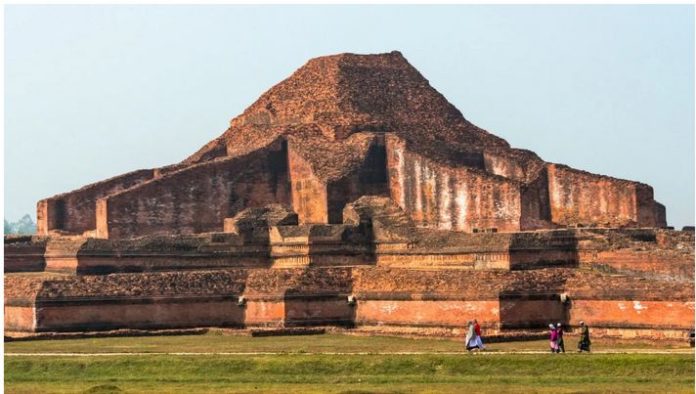by Munaza Kazmi
University is place of learning where students congregate near a well-stocked library to study a wide variety of subjects under several teachers. Today when we contemplate about the idea of a good university, our mind jumps toward the campuses of Cambridge or Oxford, but have anyone ever thought from where they got the inspiration of making such a prestigious institutions. Thinking…….. well it’s a historical journey that first finds it’s origin in the Arab world and then in the ancient. Professor George Makdisi has argued for a major eastern contribution towards the emergence of the first universities in the medieval west, showing how terms such as having ‘fellows’ holding a ‘chair’, or students ‘reading’ a subject and obtaining ‘degrees’, as well as practices such as inaugural lectures and academic robes, can all be traced back to Islamic concepts and practices. Equally the organisation of universities by a new institution, an endowment administered by a trust, which covered the expenses of both the institution and the scholars within it, seems to be a borrowing from the Islamic Waqf system.
Let’s say, the ability to bestow an advanced degree, ‘a licence to teach’ (licentia docendi), is closely modelled on the Islamic ijaza li-I-tadris, which Muslim scholars needed before they could embrace a teaching career in madrasas. Certainly, the notion of a university in the modern sense – a place of learning where students congregate near a well-stocked library to study a wide variety of subjects under several teachers – is generally recognised as having arrived in Europe via the Arab world. Secondly, where did the Arabs get the idea from? Recent research in Central Asia has made a convincing case that the first Islamic madrasas were modelled on the design of the Buddhist Vihara such as the Barmakids’ Naw Bahar that the Arabs came across when they seized Afghanistan and Sindh in the 7th century. Indeed the first ever recorded madrasa was built just a few days journey from Naw Bahar at Bost, in the western Afghanistan.
Like the Buddhist Viharas of its day it had apartments and endowed scholarships for its students, domestic and foreign, as well as a well maintained library. The courtyard plan of these early Buddhist monastery universities was first described in detail by Xuanzang at Nalanda, and is still visible there and at early Buddhist sites such as the Kushan-era vihara of Adzhina Tepe in Tajikistan, the Gandharan monastery of Takht-i- Bahi and Taxila.
From there it passed to Persia: in 11th century Nishapur there were 38 such madrasas pre-dating the founding of the greatest of these, the Nizamiyya, in 1038.
Hence the idea of the college spread to al-Azhar in Cairo, then on across North Africa to al-Qarawiyyin University, established in 956 and now recognised as the oldest living university in the world. From the Maghreb the idea of the college, and the courtyard plan of a vaulted cloister giving on to the rooms for the students and teachers, passed up through Spain to Paris.
Here, in 1180, was established the Collège des Dix-Huit. Its founder was a wealthy English merchant, Jocius of London, who opened the college immediately after his return from Jerusalem, where madrasas built on the courtyard plan were once numerous. It was the oldest of the colleges which eventually became the University of Paris. The Collège des Dix-Huit, and its successor, the Sorbonne, founded by Robert de Sorbon around 80 years later, in or around 1257, retained the most essential characteristics of its direct ancestors, the madrasa, and before that the vihara, including the pious endowment that supported the student residents and professors, as well as a library and the courtyard form.so From Paris it was only a short hop to the neatly clipped quads and courts of Oxford and Cambridge. Moreover, William Dalrymple argues that it was not just architecture and institutional forms that passed from the viharas of Buddhist Central Asia to the madrasas of the Islamic Middle East, and hence on to the universities of Europe. Infact ideas, and ways of expressing them, came too. In particular, a technique of intellectual disputation may have passed along this route as well: the recursive argument method.
This highly distinctive and unusual form of academic contention, with a formalised dialogue of argument and counter-argument, was first developed by Central Asian Buddhist scholars and is found, for example, in the Sanskrit works that Xuanzang sought out on his journey to Nalanda: the Mahavibhasa and Vasubandhu’s Treasury of Abhidharma. These method passed to Baghdad at the time of the Barmakids, and later provided the model for the form of argument adopted by Ibn Sina and passed by him on to his followers among the intellectuals of al-Andalus, such as Ibn Rushd. It was when the works of these two great masters were translated in 12th century Toledo that this method finally reached Europe.
Ibn Sina’s work al-Nafs passed into Latin and quickly spread through Europe as the much celebrated and influential De Anima. So it was that the recursive argument method eventually reached the new western centres of learning and shaped writing and disputation on medieval science, philosophy and theology. In time, Ibn Sina’s modes of argument became an essential part of medieval Aristotelian scholasticism and helped to inspire the scholastic method used by the intellectuals of the age.In this way the journey begins from the ancient Buddhist Viharas via Arab Madrassa to end in the modern universities.

















